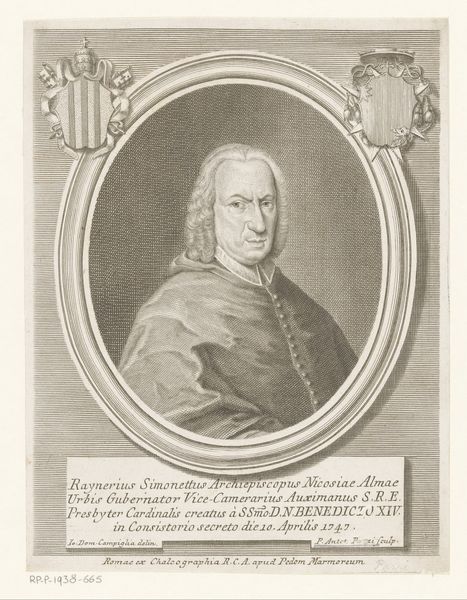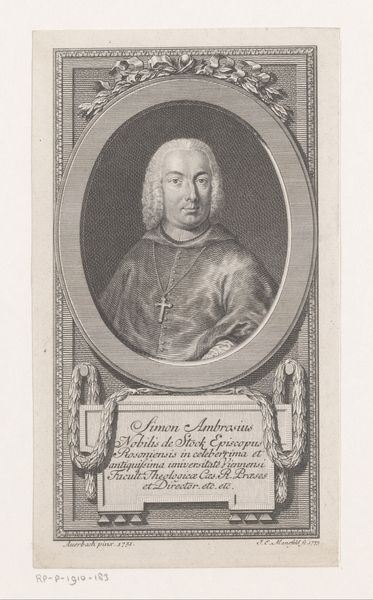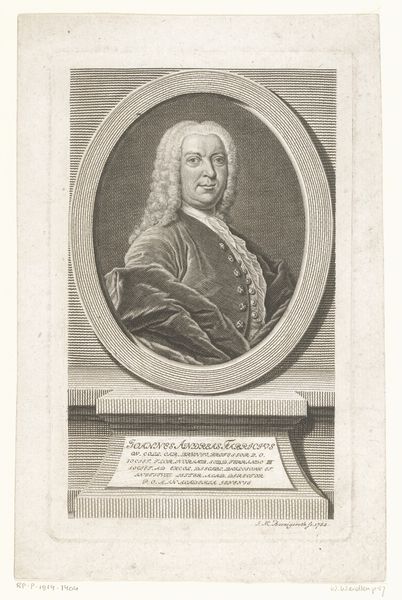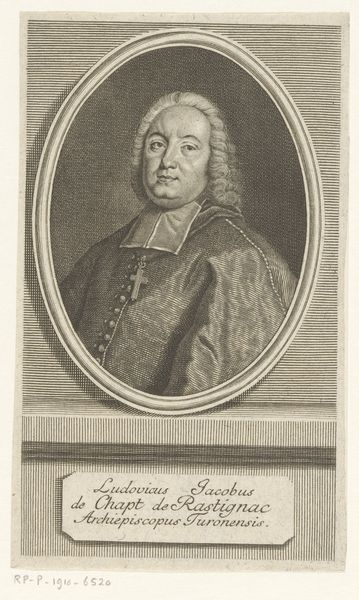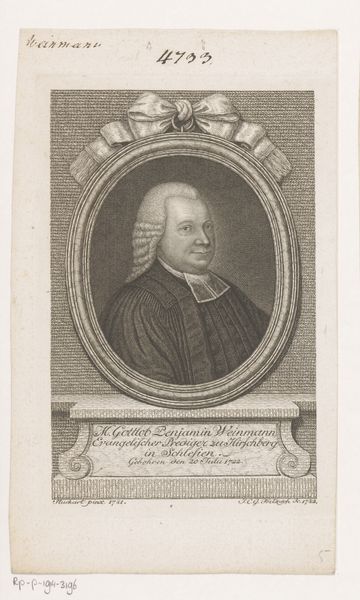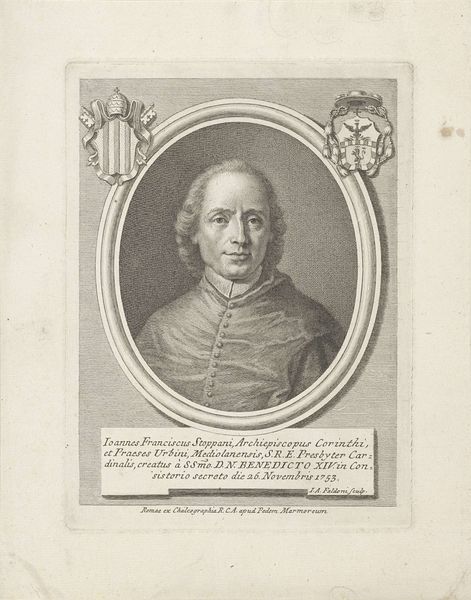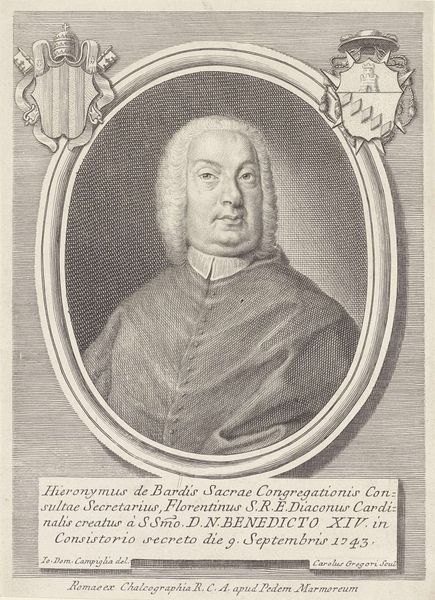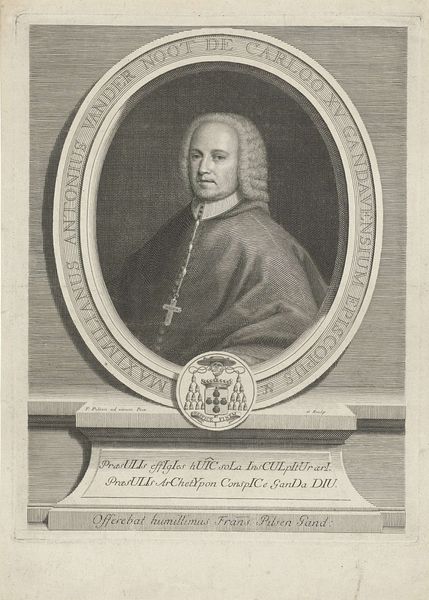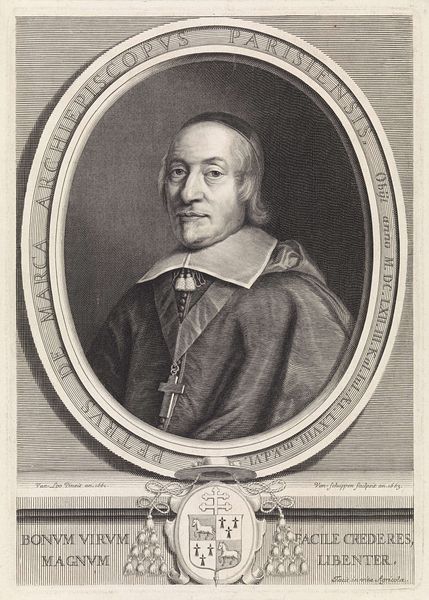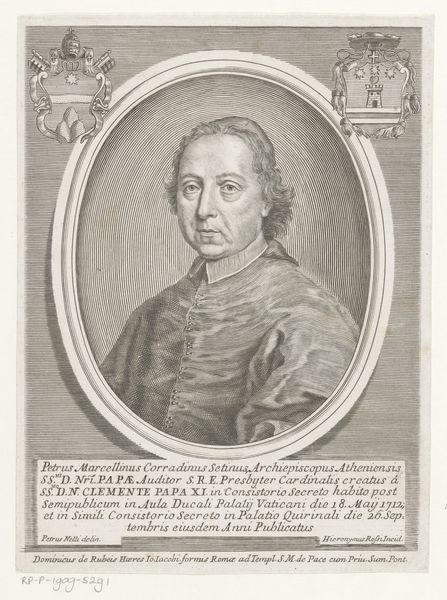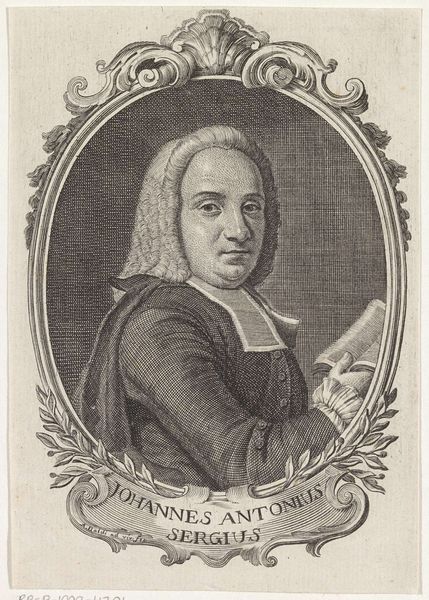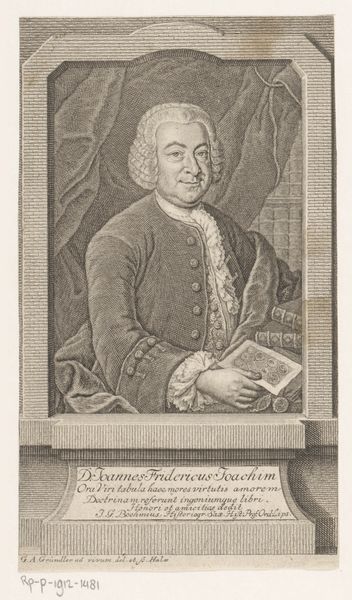
print, intaglio, engraving
#
portrait
#
pencil drawn
#
baroque
# print
#
intaglio
#
pencil sketch
#
old engraving style
#
form
#
pencil drawing
#
geometric
#
line
#
history-painting
#
engraving
#
realism
Dimensions: height 213 mm, width 162 mm
Copyright: Rijks Museum: Open Domain
Curator: Here we have "Portret van kardinaal Gaetano Stampa," an intaglio print dating from sometime between 1739 and 1762, made by Girolamo (II) Rossi. It’s part of the Rijksmuseum's collection. Editor: My initial reaction is of austere formality. The meticulously etched lines convey a sense of reserved power. The subject's gaze is direct but doesn't invite intimacy, reflecting the hierarchical distance typical of portraits of religious figures. Curator: Precisely. Rossi's print served a key purpose in disseminating the Cardinal’s image, reinforcing his authority and status within the Church and broader society. Consider the context: portraiture during this period often functioned as a form of visual propaganda. Editor: Absolutely, and notice how the visual language reflects that. The use of engraving, the symmetrical composition with the coats of arms flanking the oval portrait—it’s all meticulously designed to project a sense of established authority and unwavering tradition. The gaze meets you head on. Curator: It’s fascinating to consider how Rossi uses the intaglio technique to emulate the texture and depth one might expect from a painted portrait. By mimicking the artistic conventions associated with higher-status mediums, he elevates the perceived importance of the print itself. Its proliferation allowed for a wider engagement with, and awareness of, ecclesiastical power. Editor: Indeed. While ostensibly a portrait of an individual, the work subtly underscores the pervasiveness of religious power structures and the mechanisms employed to perpetuate them. It encourages critical reflection on issues of hierarchy, representation, and control in both historical and contemporary society. Curator: I see the way this portrait operated within specific institutional contexts, shaping the Cardinal’s image and reinforcing established social hierarchies, is definitely brought into sharper relief from our exchange. Editor: And seeing those social contexts as intentionally promoted provides an opportunity for further understanding how images work on a social consciousness level. Thank you for your time!
Comments
No comments
Be the first to comment and join the conversation on the ultimate creative platform.
